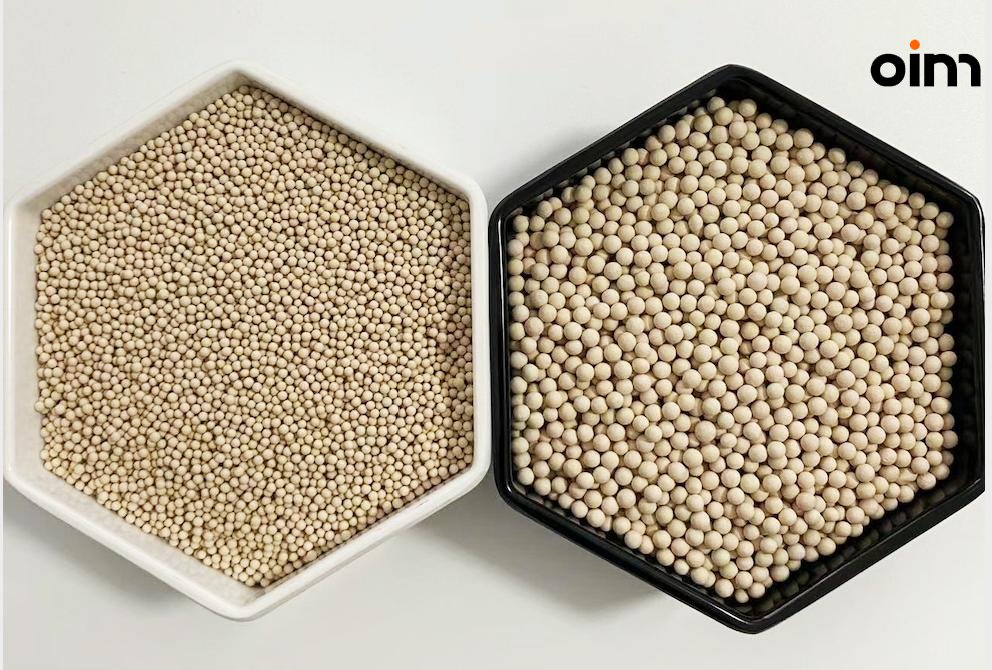The difference between molecular sieve and zeolite
2022-09-04
At present, in terms of environmental protection VOCs treatment, people are more and more like to use molecular sieve zeolite adsorbents for treatment, because conventional activated carbon can no longer meet some process requirements. It has the disadvantages of unstable combustion, adsorption and desorption, short life, and high maintenance costs in the later period. Molecular sieve zeolite adsorbents have been widely used in many fields due to their advantages of large adsorption capacity, less usage, and higher removal.

The earliest molecular sieves were discovered in nature. This natural molecular sieve is a crystalline alumino silicate. It is also called zeolite because it can foam and "boil" when it is heated and melted. It is also called molecular sieve or molecular sieve zeolite.
One. Molecular sieve zeolite classification
At present, the most common molecular sieve zeolite are A-type, X-type, Y-type, M-type and ZSM-type.
Molecular sieves have many channels with uniform pore size and neatly arranged cavities in the structure, and these cavities are connected by channels. Not only does the cave provide a large specific surface area, but it allows only molecules smaller than its diameter to enter, thereby sieving molecules of different sizes and shapes. According to the different pore size and the molecular ratio of SiO2 and Al2O3, there are different types of molecular sieves. Such as molecular sieve 3A (potassium A type), molecular sieve 4A (sodium A type), molecular sieve 5A (calcium A type), molecular sieve 10X (calcium X type), molecular sieve 13X (sodium X type), molecular sieve Y (sodium Y type), Sodium mordenite type, etc.
Two. Important parameters of commonly used molecular sieve zeolite
1. There are several important technologies for molecular sieves. We list some of them as below for your reference.
(1) Particle size: The appearance of the microspheres produced by molecular sieve adsorbent, the particle size design is controlled between the upper and lower limits, and the upper, lower and upper limits of more than 95% cannot exceed 5%.
(2) Compressive strength: Because the working conditions of the microspheres are large, the pressure difference may be large. If the compressive strength does not meet the requirements, it is easy to cause damage to the molecular sieve. In addition to affecting the service life, it may also cause equipment pipeline congestion form a severe effect.
(3) Bulk density: The bulk density of the molecular sieve adsorbent is basically proportional to the compressive strength. Under the condition that the adsorption capacity remains unchanged, the larger the bulk density is, the better the molecular sieve zeolite is.
(4) Water content in packaging: The smaller the water content in packaging, the less pre-adsorption of the microspheres during storage and transportation.
(5) Water adsorption performance: Molecular sieve zeolite is a strong adsorbent for adsorption and drying. Molecular sieve 3A only adsorbs water, which has the effect of dehydration and drying, while other molecular sieves can not only adsorb water, but also adsorb pore size smaller than that of its molecules. pore size of all molecules.
2. The characteristics of common molecular sieve zeolite are as follows:
|
Adsorbents |
Activated alumina |
Silica gel (Fine pored) |
Molecular sieve zeolite (bead) |
|
Molecular sieve 3A |
Molecular sieve 4A |
Molecular sieve 13X |
|
Bulk density (kg/m3) |
650~750 |
>800 |
680~720 |
680~720 |
>0.64 |
|
Average pore diameter (A) |
18~48 |
22 |
3 |
4 |
13 |
|
Surface area (m2/g) |
210~360 |
600 |
--- |
--- |
--- |
|
Regeneration temperature (℃) |
175~260 |
100~120 |
Within 200~300,and regeneration time 4~6h |
|
Porosity (%) |
40~45 |
40~45 |
30~40 |
Three. Compared with other adsorbents, molecular sieve zeolite has the following advantages.
1. Strong adsorption selectivity
This is because the pore size of molecular sieve is uniform and uniform, and it is an ionic adsorbent, so it can selectively adsorb according to the size and polarity of the molecule. For example, it can effectively remove ethylene and propylene from saturated hydrocarbons, and it can also effectively remove acetylene from ethylene, which is determined by its strong polarity.
2. Strong adsorption capacity
Even if the composition concentration of the gas is very low, it still has a large adsorption capacity.
3. There is still a large adsorption capacity at higher temperatures, while other adsorbents are greatly affected by temperature, so under the same temperature conditions, molecular sieves have a large adsorption capacity. It is precisely because of the above advantages that molecular sieves have become a very good adsorbent and are widely used in the production of basic organic chemicals and petrochemicals. Purification of water vapour and gaseous hydrocarbon off-gases. At present, molecular sieve zeolite have been widely used in the field of volatile organic compounds treatment. Molecular sieve zeolite runner plays an increasingly important role in the treatment of volatile organic compounds with large air volume and low concentration. It can concentrate VOCs with a concentration of only tens of milligrams per cubic meter by 10 to 20 times, making it a Gas that can be recycled or burned.
